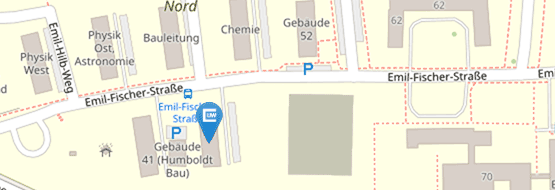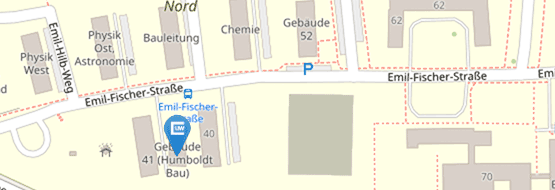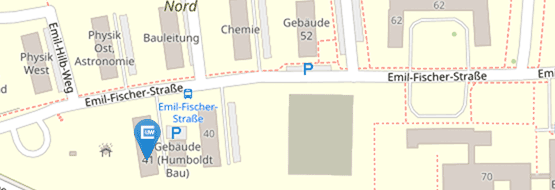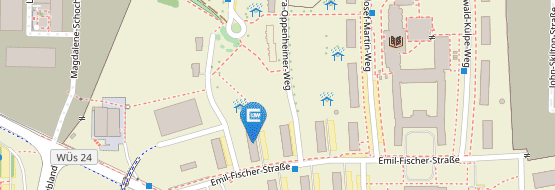Seminarreihe "structure preserving numerical methods for hyperbolic equations" im Oberseminar Mathematische Strömungsmechanik: Michael Dumbser, A structure-preserving staggered semi-implicit scheme for continuum mechanics
| Datum: | 24.09.2020, 09:30 - 10:00 Uhr |
| Kategorie: | Seminar, Veranstaltung |
| Ort: | Hubland Nord, Geb. 40, 03.003 |
| Vortragende: | Michael Dumbser |
Abstract:
In this talk, we present a new class of structure-preserving semi-implicit schemes for the unified first order hyperbolic model of Newtonian continuum mechanics proposed by Godunov, Peshkov and Romenski (GPR). The GPR model is a geometric approach to continuum mechanics, which is able to describe the behavior of moving elasto- plastic solids as well as viscous and inviscid fluids within one and the same governing PDE system. This is achieved via appropriate relaxation source terms in the evolution equations for the distortion field and the thermal impulse. In previous work it has already been shown that the GPR model reduces to the compressible Navier-Stokes equations in the stiff relaxation limit when the relaxation times tend to zero. The governing PDE system belongs to the class of symmetric hyperbolic and thermodynamically compatible systems (SHTC), which have been studied for the first time by Godunov in 1961 and later in a series of papers by Godunov & Romenski. An important feature of the proposed model is that the propagation speeds of all physical processes, including dissipative processes, are finite.
In the absence of source terms, the homogeneous part of the GPR model is endowed with some natural involutions, namely the distortion field A and the thermal impulse J need to remain curl-free. In this talk we present a new structure-preserving scheme that is able to preserve the curl-free property of both fields exactly also on the discrete level. This is achieved via the definition of appropriate and compatible discrete gradient and curl operators on a judiciously chosen staggered grid. Furthermore, the pressure terms are discretized implicitly in order to capture the low Mach number limit of the equations properly, while all other terms are discretized explicitly. In this manner, the resulting pressure system is symmetric and positive definite and can be solved with efficient iterative solvers like the conjugate gradient method. Last but not least, the new staggered semi-implicit scheme is also able to reproduce the stiff relaxation limit of the governing PDE system properly, recovering an appropriate discretization of the compressible Navier-Stokes equations.
To the best of our knowledge, this is the first pressure-based semi-implicit scheme for nonlinear continuum mechanics that is able to preserve all involutions and asymptotic limits of the original governing PDE system also on the discrete level.
Computational results for several test cases are presented in order to illustrate the performance of the new scheme.
This talk is part of the seminar series "structure preserving numerical methods for hyperbolic equations", click here for more details
via Zoom video conference (request the Zoom link from klingen@mathematik.uni-wuerzburg.de)






